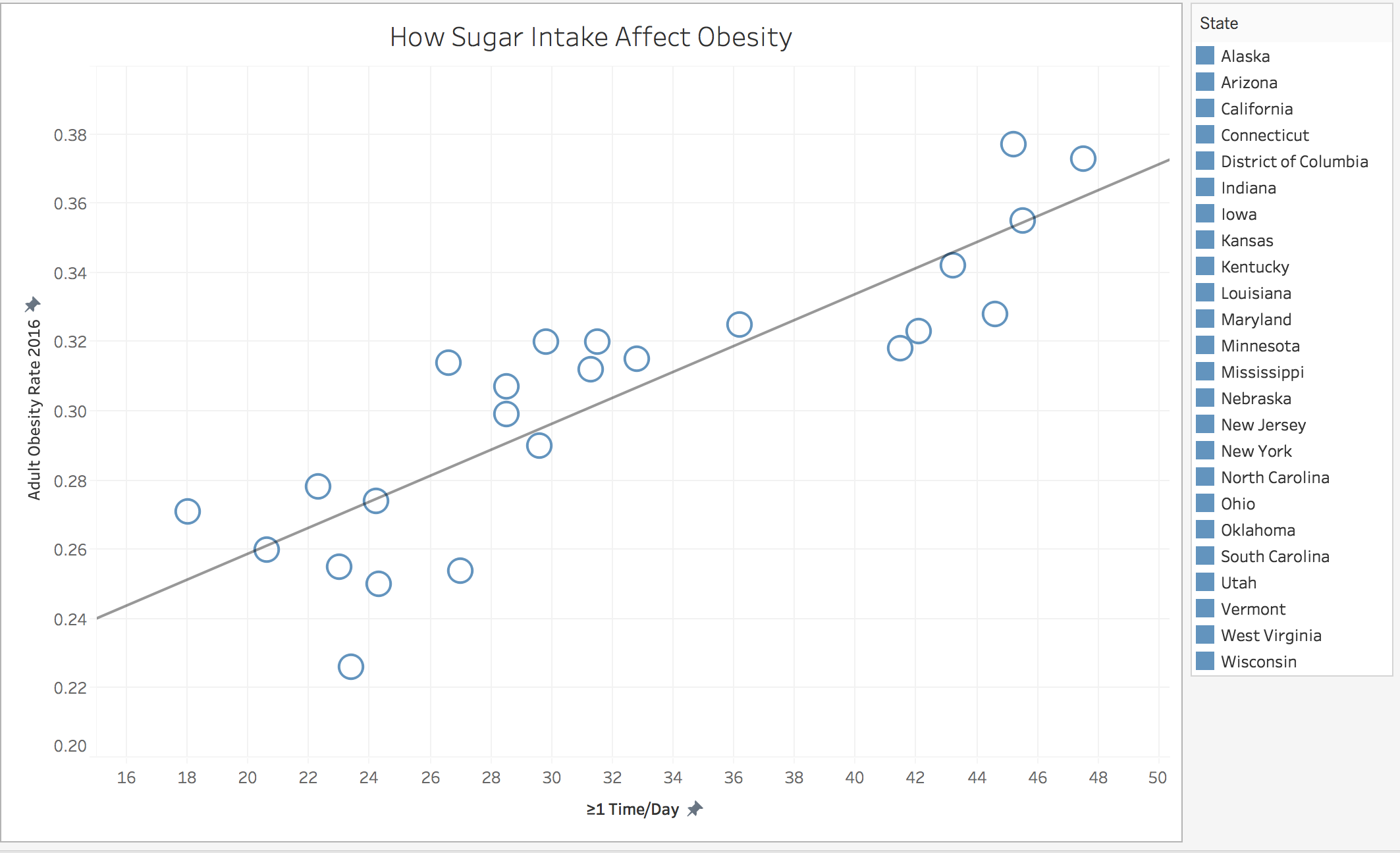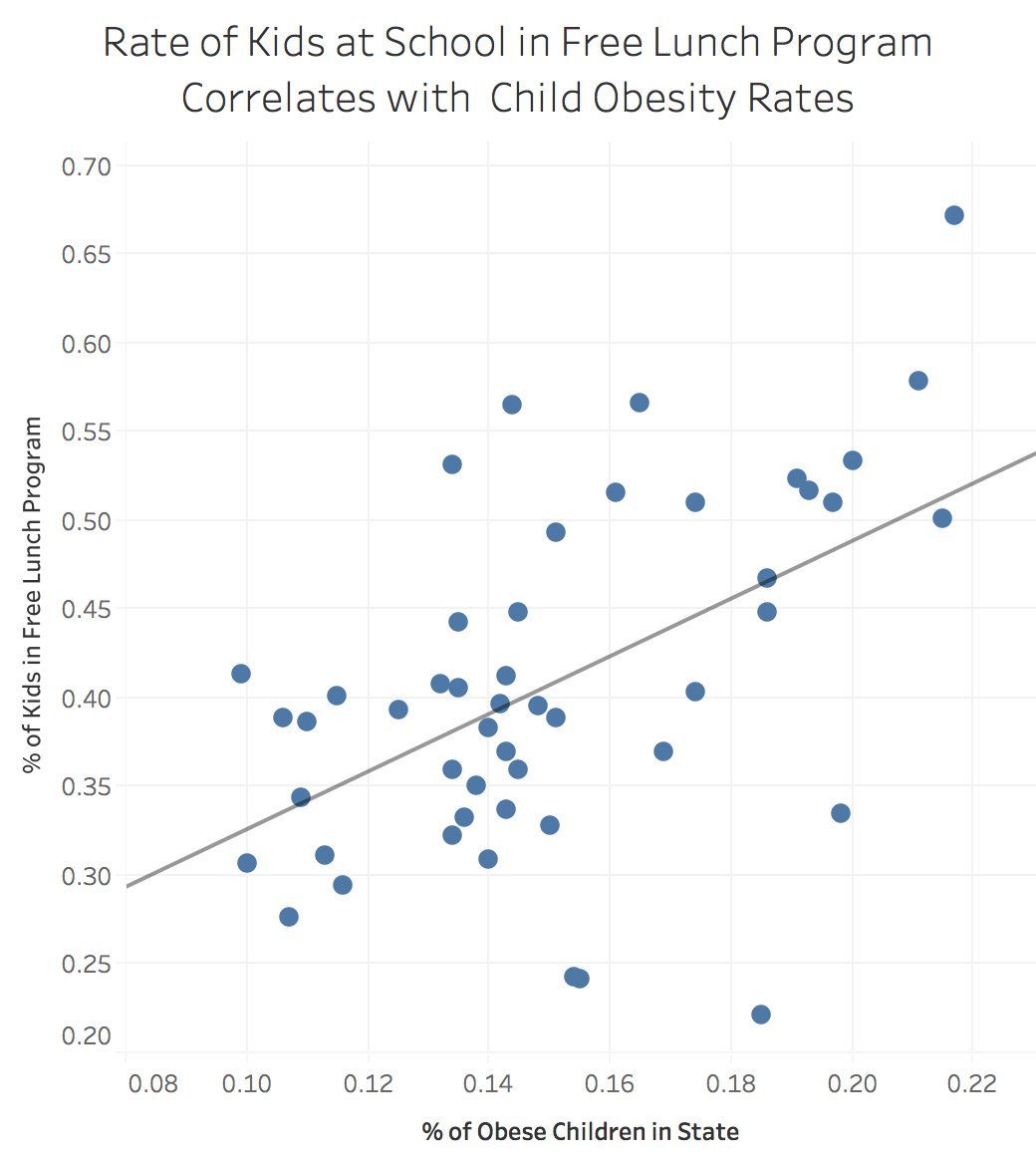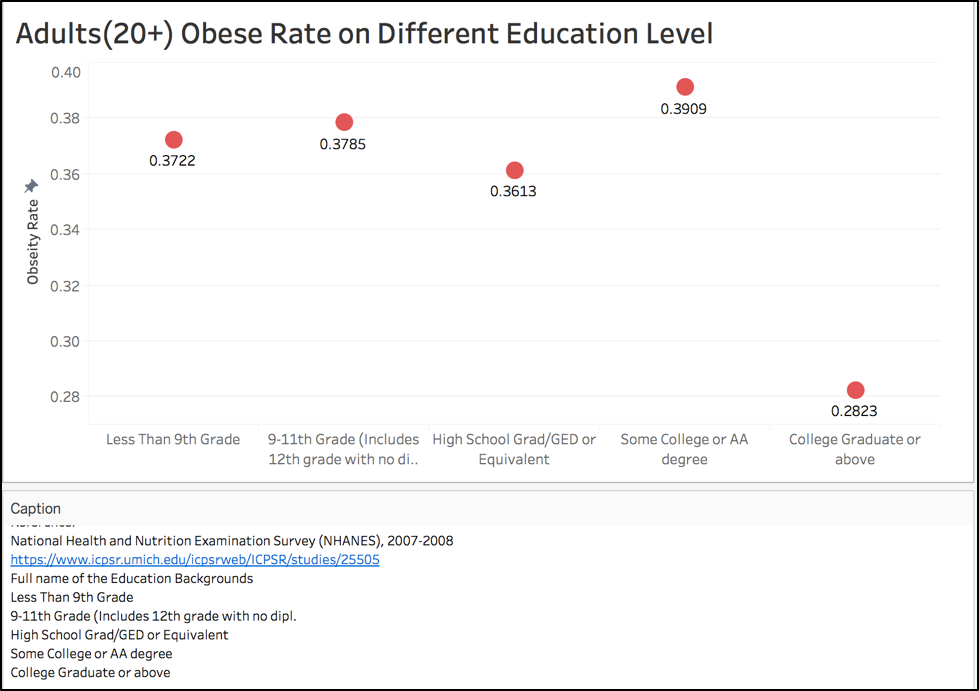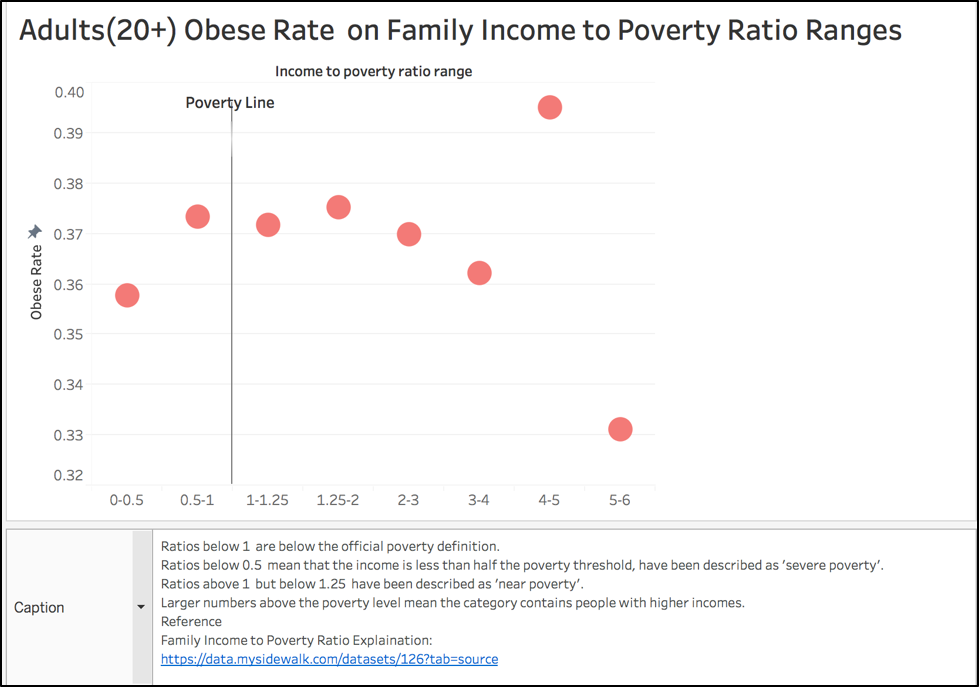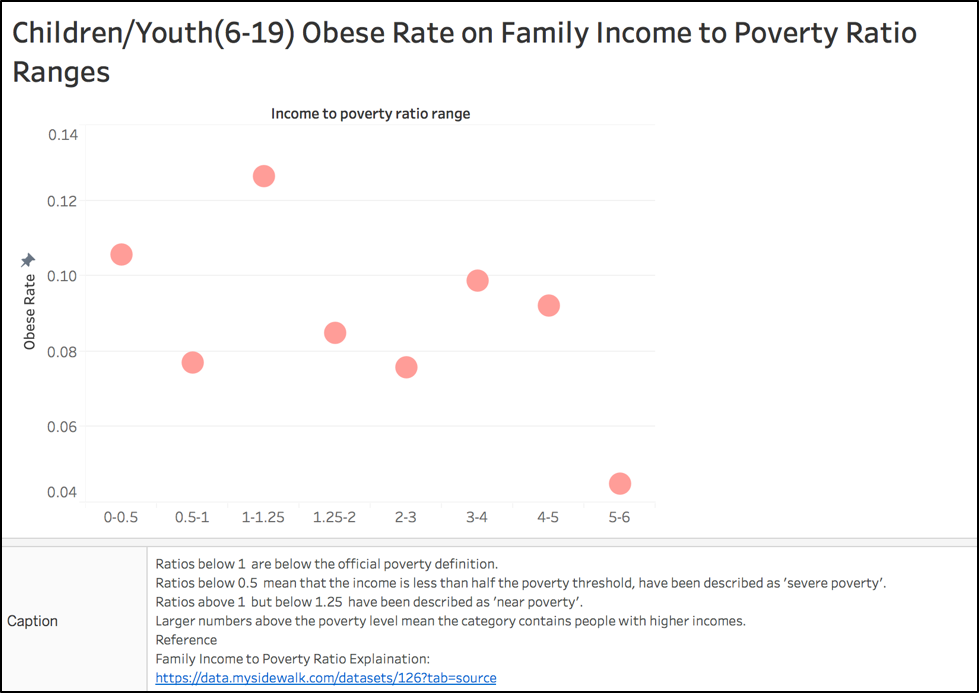$$Add Text
$$Add Text
In this graph, we can see that youth who watch more television and participate in less physical activity are more obese. This chart is good because it shows three dimensions and adds more complexity. However it is confusion to see television consumption and physical activity side by side. Therefore, in the next version, I am going to take the ratio of tv consumption versus physical activity and then plot that against obesity. This way, we’ll be able to see if physical activity and tv consumption together play an equal role in obesity.
** Suggestion: remove the legend from the screenshot. They're all the same color so the audience won't be able to tell the difference**
Some elementary schools in various states offer a free lunch program for kids living in poverty. Here we see that a higher percentage of kids in said program correlates with a higher percentage of kids in the state who are obese. The more readily abundant food is to a person, the higher the chance he grows obese. A lunch program may be helpful in teaching children nutrition education in ways that a parent cannot, but there are other lifestyle factors other than food intake habits that contribute to obesity.
The southern states surrounding Mississippi and Louisianna have some of the lowest numbers of city parks available within their neighborhoods. As a result, physical activity is seen as a lower priority, which leads to higher rates of obesity. Although there is a downward trend that indicates more parks can lead to more physical activity, the correlation isn't that strong so we aren't able to say that parks are the direct cause of physical inactivity. This confirms our claim that obesity is a complex issue that can't be resolved with one solution. However, this is a potential factor that states should keep in mind when creating initiatives to combat obesity.
If you spend all of your free time watching television and not being physically active, you are more likely to be obese.
In the above chart, we are comparing television consumption and physical activity to obesity levels. We would expect that if you watch more television, there is a direct correlation to obesity. However in the visualization it is evident that television consumption is only directly related to obesity if the youths are not physically active. If a youth is watching several hours of television but is also playing sports for several hours, they are less likely to be obese as they are still getting exercise. This visual has a stronger correlation than city parks and physical activity, which indicate that youths don't necessarily need parks to get exercise. Instead they can find other methods to get exercise such as going for a brisk walk or run around the neighborhood. However, some neighborhoods may not be well developed and may have dangerous street conditions. These states should follow successful initiatives that were implemented by others.
For example, Michigan's Department of Community Health passed a legislation in which the Department of Transportation will consider all types of transportation (pedestrians, bicyclists, motorists and public transportation riders) when they design their transportation. This encourages more people to be physically active as they have easier access to safely walk or bike. Another successful initiative was in Minnesota in which they implemented a Safe Routes to School program. This program fosters a better environment for youths to bike or walk to school. They were able to accomplish this by creating safer routes, educating on the importance of exercise and creating after-school programs that encourage physical activity.
*More information on these initiatives can be found here: https://www.cdc.gov/physicalactivity/downloads/pa_state_indicator_report_2014.pdf
Meiyuan's - not done
- Project statement (Motivation, objective, data, project plan)
- “Making-of” documentation (Details of your development process, data wrangling steps, your reasoning, detours, literature, etc.)
- Several intermediate visualization prototypes
- Final data visualization
- Road map with future features/enhancements/features
- Showcase video (<90 sec)






